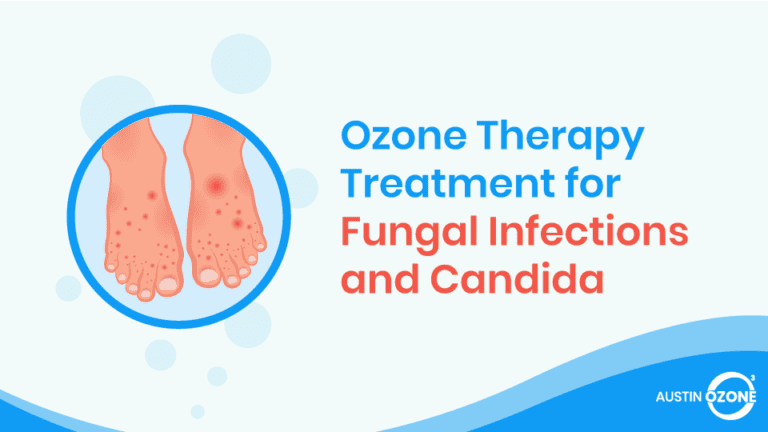They may be unnoticeable to the naked eye due to their microscopic size, but fungi are abundant worldwide, and they predate human civilization. With their existence being over two million years older than humans, fungi are known as one of the most predominant microorganisms in the human body.
The yeast known as Candida albicans is the most prevalent cause of fungal infections in humans. This popular fungus has been known to reside in people’s gut, mouth, and genitals.
Most of the time, Candida albicans is harmless. However, an overgrowth can lead to infection (Candidiasis) and is often linked to serious cases like Chronic Fatigue Syndrome (CFS)2.
Overview of Candida and CFS
Candida albicans is a microorganism that can naturally be found in the human body, particularly inside the GI tract (small and large intestine, stomach, esophagus, and mouth). Because of its nature, Candida albicans is the most common cause of fungal infection in humans.
Candida albicans is responsible for at least four types of infection: urinary yeast infection, genital yeast infection, oral thrush, and mucocutaneous candidiasis.
An overgrowth of Candida albicans can further lead to serious complications, as it weakens your immune system. Studies1 show that it can lead to chronic fatigue syndrome, a complex disorder characterized by extreme tiredness that won’t go away.
Schedule an Ozone Therapy Session Today!
What Causes a Candida Albicans Overgrowth?
With Candida albicans naturally occurring in the body, its growth is mostly regulated by the ‘good’ bacteria that also reside in your gut.
Its overgrowth is always possible if you start taking antibiotics because antibiotics target bacteria, good or bad. A considerable reduction of good bacteria would lead to the failure to regulate the population of Candida albicans in your body.
An overgrowth is also possible if you are suffering from diseases that weaken your immune system, such as HIV, cancer, or diabetes. The same goes for those undergoing medical treatments that decrease the immunity system’s capability to fight off foreign bodies (e.g., chemotherapy, taking immunosuppressant drugs).
Lastly, your lifestyle choices can also increase the chances of developing a Candida albicans overgrowth. For example, it can be triggered by extreme stress, obesity, smoking, alcohol abuse, diets high in sugar or carbohydrates , and the use of oral contraceptives.
Is Candida Albicans Infection Contagious?
Normally, a yeast infection does not transmit from person to person, though it is still a possibility. For instance, unprotected sex is one way of passing an infection (i.e., genital yeast infection) to a partner.
It is also possible for the yeast to directly enter your bloodstream, which can allow it to spread to various organs of your body.
How to Diagnose a Candida Albicans Overgrowth
If you look at how ordinary the signs and symptoms are, you will conclude that a Candida albicans overgrowth is extremely difficult to diagnose. The first thing that the doctor will check is your medical history and your current symptoms.
You would also need to disclose if you are taking any medications that can potentially weaken your immune system. In most cases of a Candida albicans infection, a physical examination would suffice to make a diagnosis.
However, if the doctor is quite unsure of the cause of your condition, they will ask to take some cell or tissue samples from the affected area for laboratory tests. This is usually the case for determining whether Candida is present in your bloodstream.
What Are the Common Symptoms of a Candida Albicans Overgrowth?
If you are feeling any of these symptoms, you might want to visit your doctor for proper diagnosis.
Poor Digestion
A healthy digestive system has a good balance of ‘good’ and ‘bad’ bacteria that helps digest hard-to-process foods like fibers and starches.
If bad bacteria outnumber the good ones, you will experience problems like indigestion, nausea, constipation, gas, diarrhea, and bloating. A decrease of the good bacteria will also lead to the proliferation of Candida in your gut.
Studies2 also show that a Candida overgrowth is linked to gastrointestinal problems such as Crohn’s disease and ulcerative colitis.
Skin, Nail, and Sinus Infections
If you are suffering from a chronic sinus infection (nasal congestion, runny nose) that lasts for more than a month, you might be suffering from a fungal infection. If this is the case, consulting your doctor for the best treatment of your condition is an absolute must.
It is also possible for Candida to thrive in your skin or nails, especially under warm and moist conditions. A Candida overgrowth on the skin is often characterized by itchiness and visible rashes. Examples of these are athlete’s foot and toenail fungus.
Joint Pain
A Candida overgrowth in the bloodstream can lead to joint pains and arthritis. This means a swelling and stiffness in the joints, specifically in the hips and knee area. If left untreated, Candida can also cause bone infections (osteomyelitis).
Although Candida in the bloodstream is extremely rare, you cannot easily remove it once you are infected by it.
Chronic or Recurring Urinary Tract and Genital Yeast Infection
Candida overgrowth is one of the leading causes of urinary tract and genital yeast infection in both men and women, although the majority of these cases are among women and the elderly. These types of infection often lead to swelling, itching, redness, and pain in the genital area.
The patient also feels a burning sensation when they try to urinate.
Appearance of Oral Thrush
Sometimes the infection spreads to the mouth, throat, tonsils, and esophagus. An oral thrush is characterized by the appearance of white, bumpy spots or patches around the mouth, tongue, tonsils, gums, and throat. This is coupled with a burning and painful sensation, followed by bleeding.
Feelings of Fatigue
Although there is not enough evidence that Candida can cause tiredness or fatigue, an overgrowth can still contribute4 to it because a candida overgrowth often leads to vitamin deficiency, particularly of magnesium, which causes fatigue. Another reason is that an overgrowth weakens the immune system, which can also leave you feeling tired.
Sometimes, the feelings of fatigue develop into a long-term disorder aptly named Chronic Fatigue Syndrome (CFS).
What Is CFS?
CFS, also known as myalgic encephalomyelitis4, is a complicated disorder that can affect people of all ages. It should be noted, however, that CFS is not the same3 as general chronic fatigue. The symptoms of CFS are wide and varied and cannot be explained by a simple medical diagnosis.
The root cause of CFS is not yet fully understood. As such, there is no specific test available to diagnose it. Instead, it is diagnosed by the presence of a number of symptoms as well as by ruling out other possible causes of these symptoms. However, research has narrowed down the possible causes of CFS to viral or fungal infections, extreme stress, an active sex life, and immunity disorders.
The main thing one should remember about CFS is that its main symptom is body malaise or extreme tiredness that does not go away even after you rested. Other symptoms include headaches, muscle and joint pains, sleep and memory problems, heart palpitations, and flu-like symptoms.
Common Treatment for Candida and CFS
For Candida albicans, antifungal medication is often prescribed to treat the infection. These medications can come in the form of topical creams, gels, and ointments, oral capsules or tablets, powders, or injections.
A doctor can also ask you to stop taking medications like antibiotics and immunosuppressant drugs to prevent an overgrowth.
On the other hand, CFS can be treated by using a multi-faceted approach.. It may be a lifestyle change, medication, specialist treatments, or a combination of these in order to manage the symptoms.
Ozone Therapy for Candida and CFS
A number of clinical studies1 show positive results in using ozone therapy as an alternative option for a Candida albicans overgrowth and CFS.
Medical ozone has always been known as a great disinfectant and can effectively remove the source of fungal and yeast infection. Subsequently, some clinics also use it to boost or strengthen the human body’s immunity system.
Research5 also shows that patients who underwent ozone therapy via auto hemo-transfusion at least twice a month showed massive improvement in terms of managing their CFS symptoms. Auto-hemotherapy is the process of ozonating a small amount of the patient’s blood and fusing it back to the body.
Research shows that patients who underwent ozone therapy via auto hemo-transfusion at least twice a month showed massive improvement in terms of managing their CFS symptoms. Auto-hemotherapy is the process of ozonating a small amount of the patient’s blood and fusing it back to the body.
There is substantial evidence that ozone therapy not only eliminates Candida overgrowth but can also ward off the activation of pathogens in the body. This, in turn, can reduce the likelihood of developing symptoms, including those of CFS.
Although the results of an ozone therapy session are mostly positive with no adverse side-effects, scientists still need additional research and trials to firmly validate their initial findings. Still, patients may want to consider ozone therapy instead of taking medications with known side-effects. After all, ozone therapy has proven to be safe and non-invasive.
Schedule an Appointment Today
References
- Cater II, R. (1995). Chronic intestinal candidiasis as a possible etiological factor in the chronic fatigue syndrome. Medical Hypotheses, 44(6), 507-15. doi: 10.1016/0306-9877(95)90515-4
- Jankoski, T. (2001, January 2). Chronic fatigue syndrome and chronic candida syndrome: a review. Retrieved from https://www.prohealth.com/library/chronic-fatigue-syndrome-and-chronic-candida-syndrome-a-review-19593
- Pyper, L. (2016, March 14). Ozone therapy & chronic fatigue syndrome. Retrieved from https://salvagente.co.za/ozone-saunas/ozone-therapy-chronic-fatigue-syndrome/
- Tirelli, U., Cirrito, C., & Pavanello, M. (2018). Ozone therapy is an effective therapy in chronic fatigue syndrome: Result of an Italian study in 65 patients. Ozone Therapy, 3(2). doi: 10.4081/ozone.2018.7812
- Tirelli, U., Cirrito, C., & Pavanello, M. (2019). Oxygen-ozone therapy is an effective therapy in chronic fatigue syndrome: Results in 100 patients. Biomedical Journal of Scientific & Technical Research, 21(3), 15890-15892. doi: 10.26717/BJSTR.2019.21.003602
- Tirelli, U., Cirrito, C., Pavanello, M., & Franzini, M. (2018). Oxygen-ozone therapy is a potentially effective therapy in chronic fatigue syndrome: Results of an Italian Study in 65 patients. Global Journal Research Analysis, 7(5).






